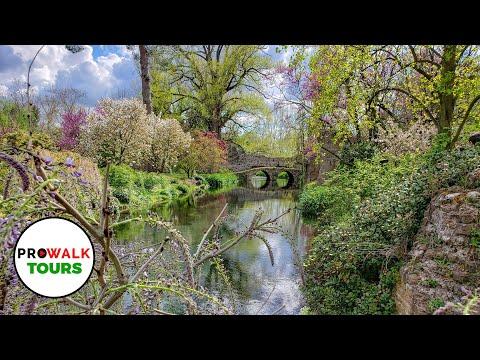I always dreamed of visiting the most beautiful garden in Italy, a place whispered about in travel magazines and sung of in travel blogs. The promise of lush landscapes and vibrant blooms seemed almost mythical. This year, after months of anticipation, I found myself on a plane to Rome, eager to experience the legendary beauty of the Villa d’Este Gardens.
The journey to Villa d’Este was like a dream sequence in an old film. I took a train from Rome to Tivoli, a charming town nestled in the Italian hills. The train ride was serene, with the Italian countryside slipping by in a blur of green and gold. When I arrived at Tivoli, I was greeted by cobbled streets and the sweet scent of blooming jasmine that perfumed the air. It was like stepping into a picturesque painting.
After a brief walk from the train station, I reached the entrance of Villa d’Este. The gate was wrought iron, delicately adorned with intricate patterns that hinted at the wonders within. As I passed through, I was met with a sight that took my breath away: an expanse of manicured gardens, classical statues, and ornate fountains, all laid out against the backdrop of rolling hills.
The gardens were originally designed in the 16th century by Cardinal Ippolito II d’Este, a man who knew a thing or two about opulence and grandeur. As I strolled through the grounds, I marveled at how well-preserved everything was. The design was both extravagant and harmonious, a testament to the skill of the landscape architects of that era.
The first thing that caught my eye was the Fontana dell’Ovato, or Oval Fountain. It was a grand centerpiece, encircled by lush greenery and ornate stonework. The fountain’s waters cascaded in perfect symmetry, creating a soothing melody that echoed through the garden. I sat on a nearby bench, letting the gentle mist from the fountain cool my face as I took in the scene.
Continuing my walk, I came upon the famous Fountain of the Dragons. This fountain featured two massive dragon sculptures spouting water from their mouths, surrounded by a lavish pool. The sight was both majestic and a little intimidating, as if the dragons were guarding a secret garden within. The water played tricks on the light, creating shimmering rainbows that danced across the surface of the pool.
One of the most enchanting parts of the garden was the “Avenue of the Hundred Fountains,” a long, narrow pathway lined with a series of smaller fountains, each more charming than the last. The water from these fountains trickled down a stone canal, creating a delightful soundscape that accompanied my walk. I could hear the soft gurgling of water mixing with the chirping of birds hidden among the foliage.
As I wandered further, I discovered the “Garden of the Cedars,” an area dedicated to the towering cedar trees that provided a canopy of shade. The scent of the cedars was earthy and calming, and I paused here for a while to enjoy the tranquility. The garden was dotted with classical statues, and it felt like I was walking through a gallery of nature and art combined.
The Villa d’Este Gardens also boasted a series of secret gardens and hidden corners, each with its own unique charm. One such place was the “Garden of the Delfini,” or Dolphin Garden, where a series of dolphin sculptures spouted water into a tranquil pool. The gentle sound of water and the secluded nature of this garden made it a perfect spot for quiet reflection.
My exploration of Villa d’Este also included the “Grotto of Diana,” a fascinating underground chamber decorated with seashells and mosaic tiles. The grotto was an excellent example of how the gardens were designed to surprise and delight visitors at every turn. The cool, dimly lit space provided a welcome respite from the sun and an opportunity to marvel at the artistic details that adorned the grotto’s walls.
As the sun began to set, the garden took on a magical quality. The fading light cast a golden hue over the fountains and statues, and the atmosphere became even more enchanting. I found myself at the edge of the gardens, looking out over the hills and valleys of Tivoli as they were bathed in the soft light of dusk.
Before I left, I visited the small café near the entrance where I enjoyed a delicious gelato. I sat on a terrace overlooking the gardens, savoring the sweet treat and reflecting on the beauty I had just witnessed. The Villa d’Este Gardens had lived up to every expectation and more. It was not just a garden but a symphony of water, stone, and greenery, a testament to the artistry of its creators.
As I boarded the train back to Rome, I felt a deep sense of contentment. The Villa d’Este Gardens had been everything I had hoped for and more. It was a place where nature and art intertwined in perfect harmony, creating a timeless experience that would remain etched in my memory forever.
